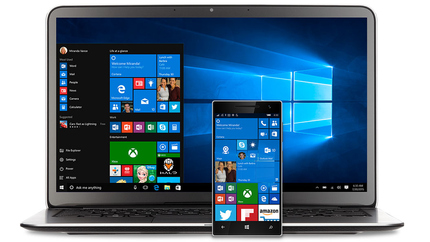Guest blogger Ben Matthews, Director at Montfort, reveals how charities with smaller resources can make the most of digital marketing. The How to Ace the A's of Digital Marketing is a mini-series of three digestible blogs.
The world of Digital Marketing can seem overwhelming at first, with a wide range of areas to learn about - from Search Engine Optimisation to Conversion Rate Optimisation, Google Ads to Facebook Ads, YouTube videos to Facebook Live.
For small local charities, with smaller resources and often stretched time for staff, it can feel like an impossible task to keep on top of Digital Marketing and make the most of the opportunities that these digital tools offer.
The key is to focus on the essentials and use the main tools in a way that makes the most of your limited time and resources.
In our series, we’ll look at the 3 main tools that small local charities should focus on - Google Analytics, Google Ads and Facebook Ads - as these tools are the simplest to get started with, will give you the most return for any time you do spend on them, and have plenty of helpful articles and guidance online to help beyond the tips outlined below.
If you want to improve your digital marketing, then acing the A's of Digital Marketing - Analytics, Adwords and Advertising - is the way to do it.
We'll start with...
Analytics
The most important part of any digital marketing activity is measurement. After all, you can’t improve what you don’t measure!
This is the foundation of your digital marketing, so make sure you get your analytics set up correctly first before moving onto the other sections in this guide.
1. Get Google Analytics
Analytics is the term for measuring performance of a digital channel. Without analytics, you’re essentially running your website blind, as you can’t see which pages are the most popular and which pages need improving.
For most small organisations, analytics means their website analytics and the tool they use is Google Analytics.
Google Analytics a free but powerful tool that tracks all of the activity on your website, including where people have come from to get to your website and what pages they visit once on your website.
Google has a simple step-by-step for how to get started with Google Analytics.
2. Analyse your audience
The “Audience” section of Google Analytics tells you who is visiting your website.
Google Analytics gives you amazing audience insights and should be one of the main things you look at when you begin exploring your website analytics.
Examples of the kind of data you can get about your audience demographics are:
- Gender: Are more men or women visiting your website? Does this match the general makeup of your charity’s audience? Or do you need to create more content that caters for either gender?
- Age: How old are the people visiting your website? If a large majority are over 65, for example, it may be beneficial to improve readability and navigation on your site. For younger audiences, you may want to integrate social media feeds like Twitter or Instagram into your website.
- Geographical location: Where do your website visitors live? This goes down to the city level, so if you know what regions and towns your website visitors are coming from, you can make better decisions about the content you have on your website. You may find you have audiences in countries you do not reach with your normal services.
- Interests: A new addition to analytics uses google search history to estimate what sort of people are reaching your site, such as ‘Green living enthusiasts’. You can then use this information to see if your content matches their interests or develop new content to match those interests.
These metrics are a useful starting point and can be used alongside others to provide a lot of insight to help improve your digital marketing strategy.
3. Understand your Acquisition channels
The “Acquisition” section of Google Analytics tells you how people reached your website.
There’s numerous ways someone can reach your website and Google groups these into common categories.
The acquisition channels that Google can measure include:
- Organic search – By entering relevant keywords into Google search bar to find you
- Paid search – Similar to organic search, but generated from Google Ads results (see section below)
- Referral - The person clicked on a link on another website that linked to your website
- Social media – This includes the likes of Facebook, Twitter, LinkedIn and Instagram
- Email – This tracks things like email newsletters, sent from services such as Mailchimp
If you see “Direct”, this is caused almost exclusively by users typing an address into their browser (or clicking on a bookmark).
If you see “(not set), this means that Google Analytics didn’t receive any information for the person visiting your website. It generally means they visited directly, clicked on a referral link, or have an ad blocker running on their account.
It’s important to monitor how people are getting to your website so you can adjust your digital marketing strategy. Which channels are generating the most traffic and so are the most effective? Which are generating the least traffic and so could be improved?
4. Gain more with Goals
Google Analytics’ “Goals” feature helps you by tracking the most important pieces of activity on your website, such as making a donation or filling out a contact form, and isolating the people that took that action in Google Analytics.
You can use this information to measure the success of your site, see how many people take that action in a typical month, and see what steps people took before they made that action - e.g. what digital channel did they come from?
Setting goals also saves you time as instead of wading through each section of Google Analytics, you can pull out the key pieces of information into the Goals section and see at a glance how your website is performing.
For example, you might set a goal for time spent on sites, setting the goal as at least two minutes spent on your website. If the time exceeds more than two minutes, it suggests that people are interested in that particular piece of content. Any less and that piece of content might need to be improved.
You could also set a goal for how many pages people visit on your website. If people are visiting more than one page on your website, this suggests that they are engaging and wanting to know more about your organisation, and that your website is well set up to help them find the information they’re looking for.
There's a useful guide for how to set up Goals in Google Analytics.
5. Excel with Event Tracking
The final piece in the Analytics puzzle is event tracking, which lets you track actions that people take on your website that leads them away from your website again.
Event tracking is one of the most useful features in Google Analytics. With just a little bit of extra code, you can capture all kinds of information about how people behave on your site.
Event tracking lets you monitor just about any action that doesn’t trigger a new page to load, For example, this could be clicking on an outbound links (where do people go next from your website?), downloads like PDFs or watching an embedded video on your website, which Google Analytics can’t normally track.
If your website is built on Wordpress, then a plugin like WP Google Analytics Events will make it easy to add event tracking to your Google Analytics.
If your website is built on a different technology, then you’ll need to add some extra code to the Google Analytics installation code on your website. There’s a clear step-by-step for adding Event Tracking to Google Analytics.
About the Author
Ben Matthews (@benrmatthews) is Director at Montfort, a digital marketing for social good, whose clients include UNICEF, UN Refugee Agency, Amnesty International, The Wildlife Trusts and The Jo Cox Foundation. Montfort set digital marketing strategy and run digital marketing campaigns, including social media, paid ads and email marketing, for charities big and small.




